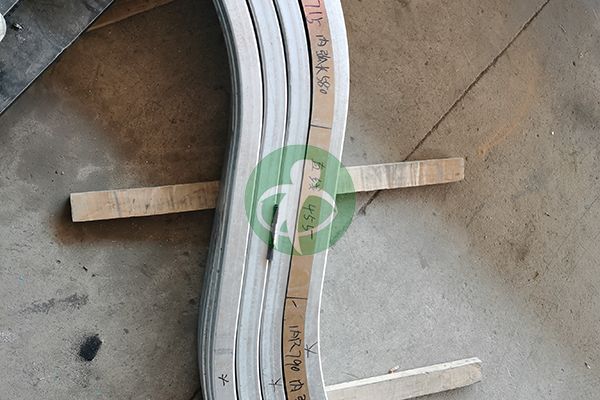Redefining the construction industry with innovative solutions, cuttin-edge technology and sustainable practices
Profile Bending 2025-06-08
Aluminum bending is a key process in various manufacturing sectors, including automotive, aerospace, construction, and furniture design. The right bending equipment is crucial for achieving precision, efficiency, and quality in your projects.
1. Understand Your Bending Needs
Before diving into the specifics of the equipment, it’s essential to assess your specific bending requirements:
-Material Thickness and Type: Determine the thickness and type of aluminum you will be working with. Different machines have varying capacities to handle thickness, and some are designed specifically for certain alloys.
-Bending Radius: Different applications may require different bending radii. Ensure that the machine can accommodate the required bending radius for your projects.
-Production Volume: Consider how often you will use the machine. For high-volume production, investing in a more advanced machine with automation features may be beneficial, while smaller operations might suffice with simpler models.
2. Types of Aluminum Bending Machines
There are several types of aluminum bending machines available in the market. Understanding these types will help you choose the right one for your needs:
-Press Brakes: These machines use a punch and die system to bend aluminum sheets. They are versatile and suitable for a variety of bending tasks.
-Roll Benders: Ideal for creating curves and arcs, roll benders are used for bending larger sections of aluminum. They can be beneficial in applications where continuous bending is required.
-Tube Benders: Specifically designed for bending aluminum tubing, these machines are used in applications such as automotive and furniture manufacturing.
-CNC Bending Machines: Computer Numerical Control (CNC) machines provide high precision and repeatability, making them ideal for complex shapes and high-volume production.
3. Key Features to Consider
When evaluating aluminum bending machines, consider the following features:
-Capacity and Power: Assess the machine's bending capacity in terms of tonnage and power. Ensure it meets your production requirements without straining the equipment.
-Automation and Control: Look for machines with user-friendly interfaces and programmable features. CNC machines, for example, allow for greater precision and repeatability, which can enhance productivity.
-Tooling Compatibility: Verify that the machine can accommodate various tooling options, as this allows for flexibility in producing different shapes and sizes. Ensure that the machine supports quick changeovers for different jobs to minimize downtime.
-Safety Features: Safety is paramount in any manufacturing environment. Look for machines equipped with safety guards, emergency stop buttons, and automatic shut-off features to protect operators and reduce the risk of accidents.
-Ease of Maintenance: Consider the machine’s design regarding maintenance and serviceability. Machines that are easy to maintain will save you time and costs in the long run. Check for access points for lubrication and parts replacement.

4. Budget Considerations
Setting a budget is crucial when purchasing bending equipment. Here are some financial aspects to consider:
-Initial Investment: High-quality bending machines can be a significant investment. Determine your budget range, factoring in the features and capabilities you require.
-Operating Costs: Consider ongoing costs such as electricity, maintenance, and tooling replacement. More efficient machines may have higher upfront costs but can save you money over time through reduced operating expenses.
-Potential ROI: Evaluate how the machine will impact your production efficiency and output quality. A machine that enhances productivity can lead to a quicker return on investment.
5. Supplier Evaluation
Choosing the right supplier is as important as selecting the right machine. Here are some tips for evaluating potential suppliers:
-Reputation and Experience: Research the supplier’s reputation in the industry. Look for established companies with a track record of providing reliable equipment and excellent customer service.
-Technical Support and Training: Ensure the supplier offers adequate technical support, training, and installation services. A good supplier should provide training on how to operate and maintain the machine.
-Warranty and Service Plans: Check the warranty terms and available service plans. A solid warranty can provide peace of mind, and service plans can ensure your machine remains in optimal condition.
6. Testing and Demonstration
Before making a final decision, it’s advisable to request a demonstration of the machine. Here’s how to approach this:
-Live Demonstration: Ask the supplier for a live demonstration of the machine in action. This will allow you to see the machine's performance and capabilities firsthand.
-Sample Bending: If possible, provide a sample of the aluminum material you will be using and request that the supplier demonstrate bending it to your specifications. This will give youa clearer understanding of how the machine handles your specific requirements.
-Feedback from Existing Users: If possible, talk to current users of the machine. Their experiences can provide valuable insights into the machine’s reliability, performance, and any potential issues.
7. Long-term Considerations
When investing in aluminum bending equipment, it’s essential to think long-term. Here are some factors to keep in mind:
-Scalability: Consider whether the machine can adapt to future production needs. If your business grows, you may need to handle larger volumes or more complex designs. Ensure the equipment you choose can scale with your operations.
-Technological Advancements: The manufacturing industry is continuously evolving with new technologies. Choose a machine that is compatible with potential upgrades or expansions, allowing you to integrate advancements without needing a complete overhaul.
-Environmental Impact: With increasing emphasis on sustainability, consider machines that are energy-efficient and produce less waste. This not only helps the environment but can also lower your operational costs in the long run.
Selecting the right aluminum bending equipment is a critical decision that can significantly impact your manufacturing processes. By thoroughly assessing your needs, understanding the types of machines available, and considering essential features and long-term implications, you can make an informed choice that aligns with your business goals.
Take the time to research and evaluate different options, consult with suppliers, and seek feedback from industry peers. Ultimately, the right bending machine will enhance your productivity, improve the quality of your products, and contribute to the overall success of your business.